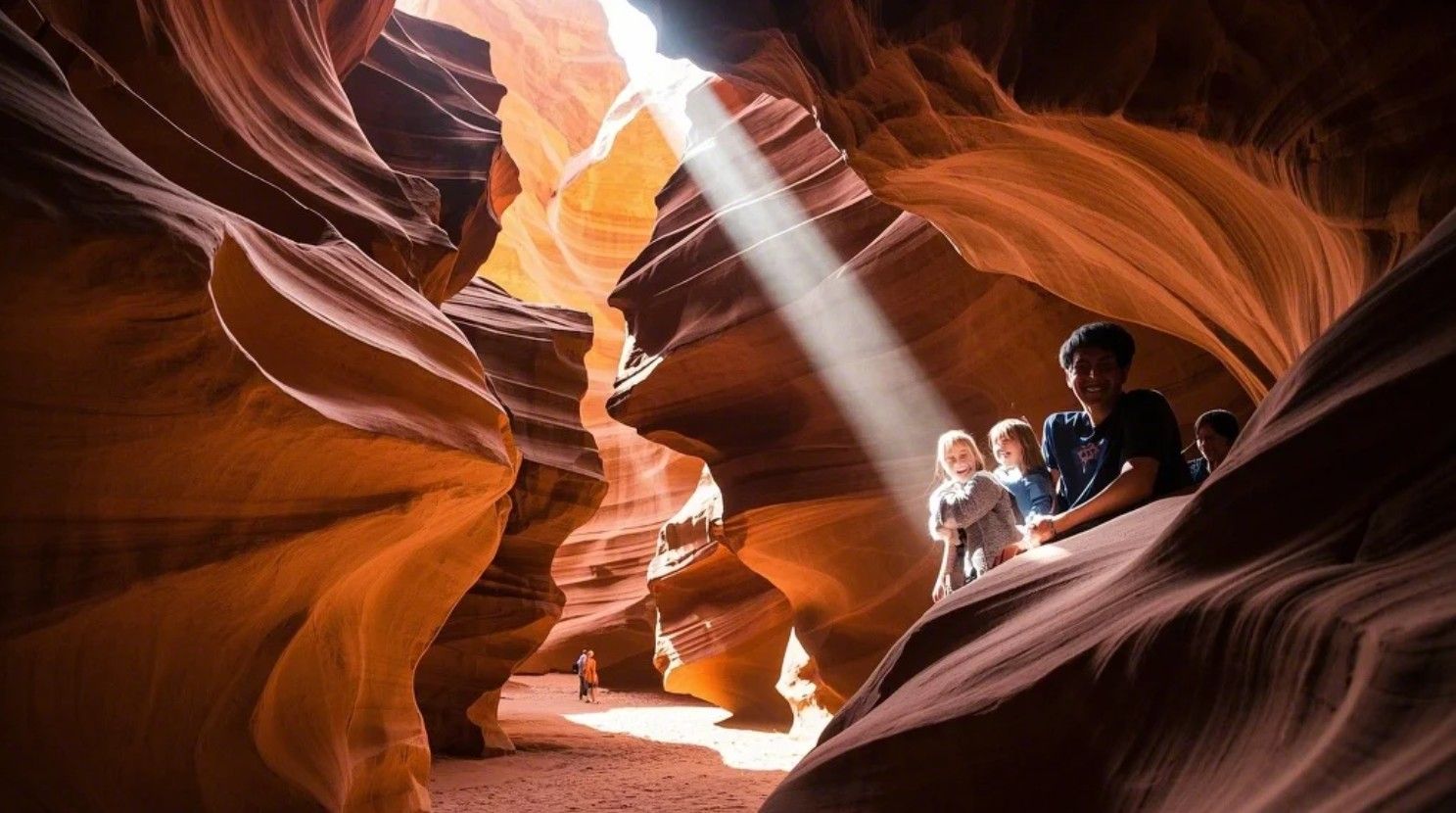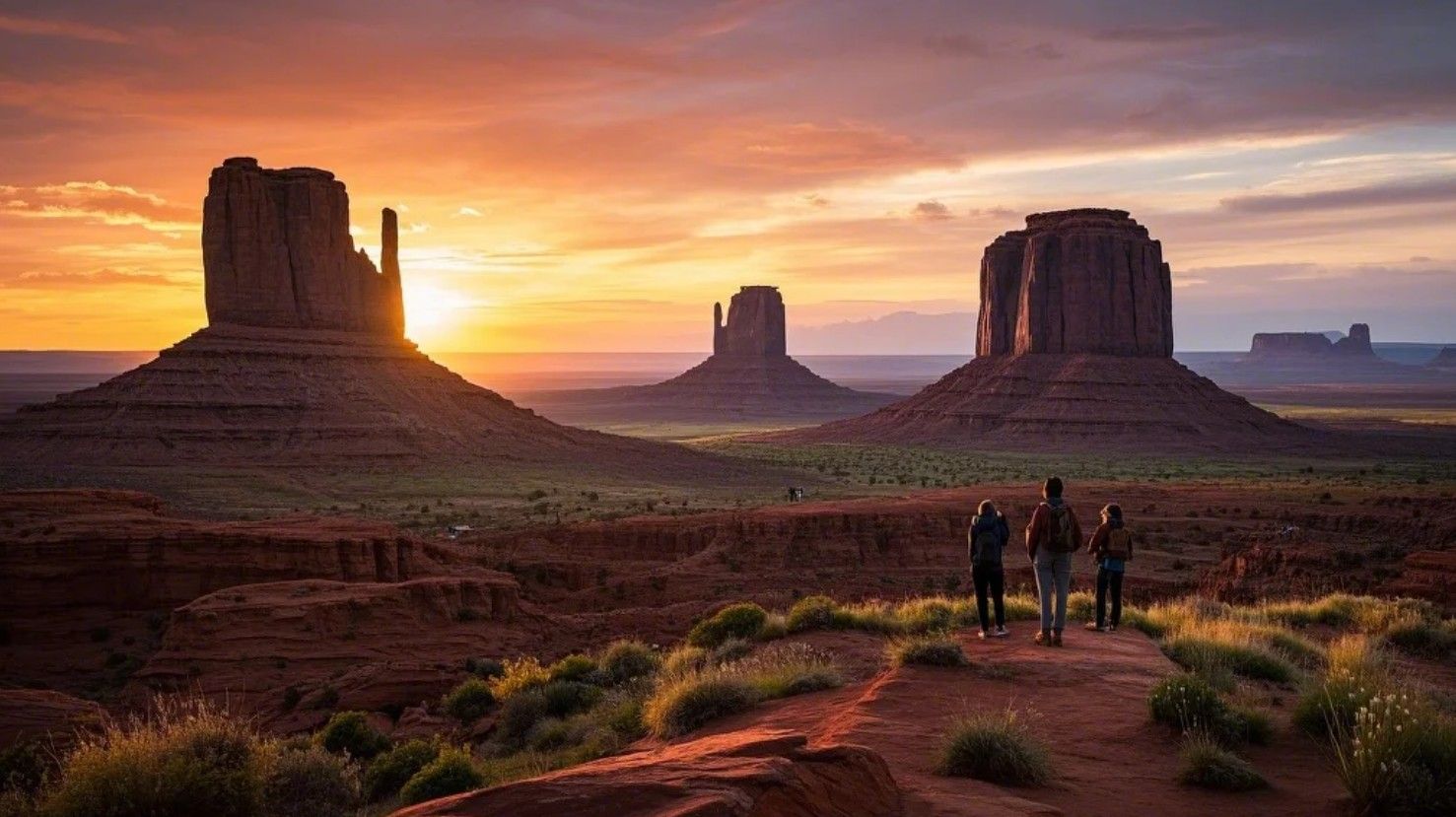A Road Trip Across the American Southwest
| The American Southwest is a land of stark beauty, vast deserts, and iconic landscapes. From the red rock formations of Arizona to the towering cliffs of Utah, this region offers some of the most breathtaking scenery in the United States. A road trip through the Southwest is the perfect way to explore its natural wonders, historic sites, and vibrant cultures. In this article, I’ll share my experience of a road trip across the American Southwest, along with practical tips and insights to help you plan your own unforgettable journey. Why Road Trip Through the American Southwest? The American Southwest is a road tripper’s paradise for several reasons:  Stunning Landscapes: From the Grand Canyon to Monument Valley, the region is home to some of the most iconic natural wonders in the world. Diverse Attractions: The Southwest offers a mix of national parks, historic sites, and cultural experiences. Flexibility: A road trip allows you to explore at your own pace and discover hidden gems along the way. Adventure: The open roads and vast landscapes create a sense of freedom and adventure. Pro Tip: The best time to visit the American Southwest is during the spring (March to May) or fall (September to November), when the weather is mild and comfortable for outdoor activities. Planning Your Road Trip Planning is key to making the most of your road trip through the American Southwest. Here’s what you need to consider: 1. Choosing Your Route The Southwest is vast, so it’s important to plan your route based on your interests and time. Here’s a popular 10-day itinerary: Day 1–2: Las Vegas, Nevada to Grand Canyon National Park, Arizona Day 3–4: Page, Arizona (Antelope Canyon and Horseshoe Bend) Day 5–6: Monument Valley, Utah to Moab, Utah (Arches and Canyonlands National Parks) Day 7–8: Bryce Canyon National Park, Utah to Zion National Park, Utah Day 9–10: Las Vegas, Nevada Pro Tip: Use a road trip planning app or GPS to map out your route and estimate driving times. 2. Budgeting The cost of a road trip depends on your travel style. Here’s a rough estimate: Accommodation: 50–200 per night (camping, motels, or hotels). Food: 20–50 per day (groceries and dining out). Gas: 200–400 (depending on your vehicle and distance). Activities: 50–100 per day (entrance fees and tours). Pro Tip: Save money by camping, cooking your own meals, and visiting free or low-cost attractions. 3. Packing Essentials Packing smart ensures you’re prepared for the diverse conditions of the Southwest: Clothing: Layers, including a light jacket and comfortable hiking shoes. Gear: Cooler, reusable water bottles, sunscreen, and a first-aid kit. Navigation: Maps, GPS, and a road atlas. Extras: Camera, binoculars, and a journal. Pro Tip: Bring a portable charger and extra batteries for your devices. Our Road Trip Across the American Southwest Here’s a snapshot of our 10-day road trip through the American Southwest: Day 1–2: Las Vegas to Grand Canyon National Park We started our journey in Las Vegas, where we picked up our rental car and stocked up on supplies. The drive to Grand Canyon National Park took about 4.5 hours. We spent two days exploring the South Rim, hiking the Bright Angel Trail, and watching the sunset over the canyon. The sheer size and beauty of the Grand Canyon left us in awe. Day 3–4: Page, Arizona From the Grand Canyon, we drove to Page, Arizona, a small town known for its stunning landscapes. We visited Antelope Canyon, a slot canyon with mesmerizing light beams, and Horseshoe Bend, a dramatic curve in the Colorado River. We also took a boat tour of Lake Powell, enjoying the serene waters and red rock formations. Day 5–6: Monument Valley to Moab, Utah Next, we headed to Monument Valley, a iconic landscape of towering sandstone buttes. We took a guided tour through the valley, learning about its history and significance to the Navajo people. From there, we drove to Moab, Utah, where we spent two days exploring Arches National Park and Canyonlands National Park. The arches, canyons, and mesas were breathtaking. Day 7–8: Bryce Canyon National Park to Zion National Park From Moab, we drove to Bryce Canyon National Park, known for its unique hoodoos (tall, thin rock spires). We hiked the Navajo Loop Trail and watched the sunrise at Sunrise Point. The next day, we continued to Zion National Park, where we hiked the Angels Landing Trail and explored the Narrows, a slot canyon with a river running through it. The beauty of Zion was unparalleled. Day 9–10: Return to Las Vegas We ended our trip with a drive back to Las Vegas, stopping at Valley of Fire State Park along the way. The red sandstone formations and petroglyphs were a fitting end to our Southwest adventure. In Las Vegas, we celebrated our journey with a show and a delicious meal. Must-See Stops in the American Southwest Here are some of the top attractions you shouldn’t miss: Grand Canyon National Park: A natural wonder that’s a must-see for any traveler. Antelope Canyon: A slot canyon with stunning light beams and swirling rock formations. Monument Valley: An iconic landscape of towering sandstone buttes. Arches National Park: Home to over 2,000 natural stone arches. Zion National Park: Known for its dramatic cliffs, canyons, and hiking trails. Pro Tip: Visit lesser-known parks like Capitol Reef National Park or Canyon de Chelly National Monument for a quieter experience. Tips for a Smooth Road Trip Here are some practical tips to make your road trip through the American Southwest enjoyable and stress-free: Stay Hydrated: The desert climate can be dehydrating, so drink plenty of water. Drive Safely: Be prepared for long drives, changing weather conditions, and wildlife on the roads. Respect Nature: Follow Leave No Trace principles and stay on designated trails. Plan for Weather: The Southwest can experience extreme temperatures, so pack accordingly. Stay Flexible: Be prepared to adjust your plans based on weather, road conditions, and your energy levels. Pro Tip: Check road conditions and weather forecasts before heading out each day. Budgeting for Your Road Trip Here’s a rough estimate of costs for a 10-day road trip through the American Southwest: Accommodation: 500–2,000 (camping, motels, or hotels). Food: 200–500 (groceries and dining out). Gas: 200–400 (depending on your vehicle and distance). Activities: 500–1,000 (entrance fees and tours). Pro Tip: Save money by camping, cooking your own meals, and visiting free or low-cost attractions.  The Impact of Our Road Trip Our road trip through the American Southwest was an unforgettable adventure that deepened our appreciation for nature and the open road. The stunning landscapes, challenging hikes, and quiet moments of reflection left us with memories we’ll cherish forever. Conclusion A road trip across the American Southwest is a journey of discovery, adventure, and awe. From the iconic landscapes of the Grand Canyon and Monument Valley to the hidden gems of Utah’s national parks, the region offers endless opportunities for exploration and wonder. By planning carefully, staying flexible, and embracing the spirit of adventure, you can create a road trip that’s as seamless as it is unforgettable. So pack your bags, hit the road, and get ready to experience the magic of the American Southwest—it’s a journey you’ll never forget! |
jack
|
2025.03.21




